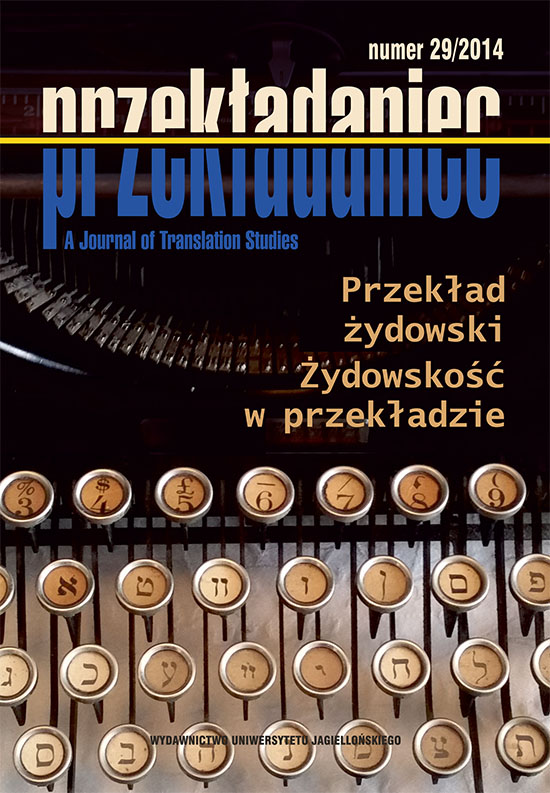Upadli (czy) giganci? Kilka uwag o nefilim i gigantes w Biblii hebrajskiej i Septuagincie
The Fallen (or) Giants? Some Remarks on Nephilim and Gigantes in the Hebrew Bible and the Septuagint
Author(s): Wojciech KosiorSubject(s): Language and Literature Studies, Jewish studies, Studies of Literature, Theology and Religion, Jewish Thought and Philosophy
Published by: Wydawnictwo Uniwersytetu Jagiellońskiego
Keywords: nephilim; giants; rephaim; underworld; Bible translation
Summary/Abstract: The larger the gap between languages, cultures and religions involved in the translation process, the more challenging it becomes, as was the case with the Septuagint [LXX] rendition of the Hebrew Bible [HB], which aimed at compromising Hellenistic and Semitic entourages. Valuable insight into the translator’s work is offered by an analysis of a particular word or phrase which undergoes a linguistic and cultural transmission. The word nephilim appears just three times in the Masoretic text of the HB: once in Genesis 6:4 and twice in Numbers 13:33. In the LXX both of these instances have been rendered by the Greek gigantes, which means that the translator identified the mysterious antediluvian figures as the primeval inhabitants of one of the Canaanite valleys and, at the same time, interpreted both of them as the Semitic equivalent of the Greek giants. Given the etymological and semantic differences between nephilim and gigantes, the question arises: why was this particular decision made? This study follows the hypothetical process of interpretation and translation by reconstructing the ancient Greek mythical complex of giants and by analyzing the biblical sources (Genesis 6:1–4; Numbers 13:28–33; Ezekiel 32:22–27) where the nephilim/nophelim appear. Moreover, this article outlines the factors that have influenced the translation. Finally, by scrutinizing the issue of the nefilim–gigantes this article describes the ancient biblical translator’s workshop on the particular example. Given the limitations of every translation, it is crucial to acknowledge the ambivalent nature of this process: undoubtedly, the translator strives to find the most appropriate term being the closest semantic equivalent of the word in question at the same time, however, the particular decision reducing the semantic uncertainty blurs other interpretative options. In other words, whatever had been the initial interpretation of the mysterious nephilim in these passages, it was in a way “overwritten” and thus substituted by the Greek gigantes.
Journal: Przekładaniec.
- Issue Year: 2014
- Issue No: 29
- Page Range: 41-64
- Page Count: 24
- Language: Polish

